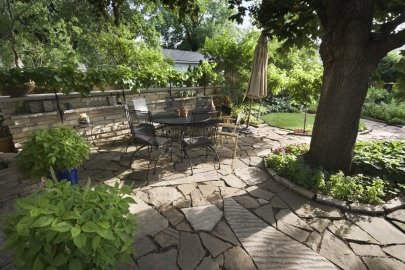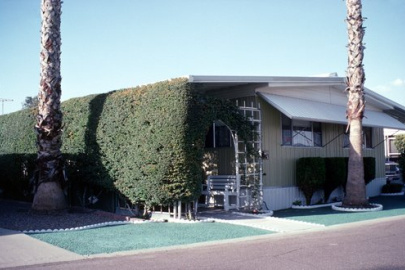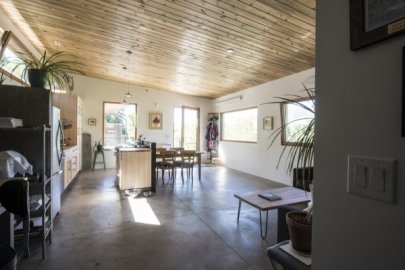Properly selected, placed, and maintained landscaping can provide excellent wind protection, or windbreaks, which will reduce home heating costs considerably. Furthermore, the benefits from these windbreaks will increase as the trees and shrubs mature. To use a windbreak effectively, you need to know what landscape options will work best in your regional climate and your microclimate.
A windbreak reduces heating costs by lowering the wind chill near your home. Wind chill is the temperature it "feels like" outside and is based on the rate of heat loss from exposed skin caused by wind and cold. As the wind increases, the body is cooled at a faster rate and the skin temperature drops. For example, if the outside temperature is 10°F (-12°C) and the wind speed is 20 miles per hour (32 kilometers per hour), the wind chill is -24°F (-31°C).
A windbreak will reduce wind speed for a distance of as much as 30 times the windbreak's height. But for maximum protection, plant your windbreak at a distance from your home of two to five times the mature height of the trees. The best windbreaks block wind close to the ground by using trees and shrubs that have low crowns. Dense evergreen trees and shrubs planted to the north and northwest of the home are the most common type of windbreak.
Trees, bushes, and shrubs are often planted together to block or impede wind from ground level to the treetops. Evergreen trees combined with a wall, fence, or earth berm (natural or man-made walls or raised areas of soil) can deflect or lift the wind over the home.
Be careful not to plant evergreens too close to your home's south side if you want to collect passive solar heat from the winter sun.
If snow tends to drift in your area, plant low shrubs on the windward side of your windbreak. The shrubs will trap snow before it blows next to your home. Snow fences can also help trap snow.
In addition to more distant windbreaks, planting shrubs, bushes, and vines next to your house creates dead air spaces that insulate your home in both winter and summer. Plant so there will be at least 1 foot (30 centimeters) of space between full-grown plants and your home's wall.
Summer winds, especially at night, can have a cooling effect if used for home ventilation. However, if winds are hot and your home is air conditioned all summer, you may want to keep summer winds from circulating near your home.
Windbreaks also provide:
- A barrier from sounds, sights, and smells
- Protection for livestock
- An aesthetically pleasing landscape element
- Wildlife habitat
Subscribe to receive updates from Energy Saver, including new blogs, updated content, and seasonal energy saving tips for consumers and homeowners.





